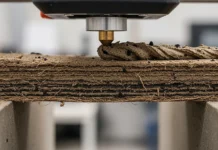The White House has gone on to propose $163 billion when it comes to non-defense spending cuts in the 2026 discretionary budget request that was released on May 2. Although the Congress must still go on and finalize the federal budget, the proposal goes on to offer a look into the priorities set by the Trump administration, which could include both hikes and cuts as far as different programs funding construction projects are concerned.
Interestingly, these cuts will amount to a decline of 22.6% from the already enacted 2025 budget. As proposed, this partial budget can very well formalize numerous cuts that the President has moved to make by way of executive orders, like towards environmental initiatives as well as diversity, inclusion programs, and equity. It is well to be noted that some of the largest cuts have been proposed for the US department as well as its international programs. This amounts to a decrease of $49.1 billion, or an estimated 84%. The department cuts, amounting to $33.6 billion, would come from housing and urban development and $33.3 billion from health and human services.
Energy along with environment
The proposal is likely to cut billions of dollars in funding from the environmentally focused programs. It has options to cancel $15.2 billion from numerous US Department of Energy initiatives, such as the ones that fund renewable energy as well as carbon dioxide removal from the air.
The Trump budget also has targets for another $2.5 billion from the US Environmental Protection Agency in the form of its Clean and Drinking Water State Revolving Fund formula programs. The White House officials have gone on to jot in the budget documents that the states have to be responsible when it comes to funding their own water infrastructure projects.
Also targeted for the cuts is $609 million in funding from Bureau of Reclamation programs that invest efforts in habitat restoration. However, it does not build or maintain water infrastructure. The budget will also Cut $389 million from the environmental management program of the energy department that leads nuclear as well as hazardous waste cleanup activities across 14 sites and functions. The Waste Isolation Pilot Plant, which is a geological disposal facility based in New Mexico.
The White House officials have written that the budget maintains the 2025 funding levels when it comes to the Hanford site cleanup within Washington state but decreases funding for work across other sites. These cuts include $178 million that the officials have gone on to attribute to the shifting of responsibilities to the National Nuclear Security Administration from the Environmental Management Program. The budget is also going to cut $254 million allocated for the federal Superfund program, which, according to officials, already has $1.6 billion available from the 2021 Infrastructure Investment and Jobs Act and also the 2022 Inflation Reduction Act.
Apparently, Sheldon Whitehouse, who happens to be a ranking member of the Senate committee when it comes to environment and public works, has gone on to criticize the decreases as an unmitigated disaster for everybody except the ones who loot or pollute.
Whitehouse added that through crippling the EPA, Trump will make sure that families across the nation happen to be more dangerously exposed to unsafe water, the steep costs of climate change, and toxic waste. This proposal also cuts $325 million that has been allocated to the National Institute of Standards and Technology. The White House officials wrote that NIST has long funded awards when it comes to the development of curricula that advance a radical climate agenda.
There would be another $80 million, which would be cut from the Department of the Interior’s renewable energy programs under the said proposal.
Transport funding
There are several US Department of Transportation programs that help fund construction projects that would again see increases under the proposed budget. Such programs include an additional $24 million for a Federal Aviation Administration program in order to upgrade the US national airspace system and also replace the radar equipment.
The budget is also planning to add seven $70 million when it comes to infrastructure for rebuilding America – INFRA grant program, which, according to the White House, has been using a rigorous benefit-cost analysis when it comes to choosing port, highway, and rail projects to support. It also goes on to add $400 million when it comes to rail safety as well as infrastructure grants and another $596 million as far as shipbuilding and port infrastructure are concerned.
Training of the workforce
As part of the White House’s “Make America Skilled Again” initiative, officials have gone on to propose handing the states more flexibility as well as control in order to coordinate with employers.
Apparently, states that received the related grants would have to spend a minimum of 10% of the world when it comes to apprenticeship programs.
While consolidating many grants under the program, the White House also proposes to cut $1.6 billion in funding. Trump officials have gone on to criticize the Biden administration and its priorities as far as workforce training spending is concerned. The budget also goes on to cut another $1.6 billion from the Job Corps, which, as per officials, is a failed experiment, and another $405 million from a program that helped to train and subsidize employment when it comes to low-income seniors.
More cuts in the pipeline
There are several other programs funding construction projects that are going to be targeted for funding cuts by the White House proposal. These include $3.3 billion from the HUD’s community development block grant program that is focused on numerous neighborhood-level projects. As per the White House officials, this formula funding program happens to be poorly targeted and should be funded at the local level.
The budget will also slash $1.1 billion which have been allocated for the US Army Corps of Engineers, Harbor Maintenance Trust Fund. Another $73 million would be cut from the National Park Service construction, as per the White House. They look forward to transferring some smaller as well as less visited parks to state or tribal governments and think that they all should be managed locally.































